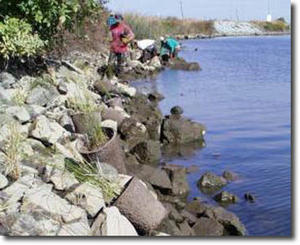Critical infrastructure protectionCalifornia’s flood-protection system crumbling
California has a patchwork of aging flood-protection system; it was built over the last 150 years by individuals, localities, and the state government; experts say this system, now protecting an estimated $69 billion in assets, is woefully inadequate

One of a multitude of patchwork California levees // Source: nola.com
Over the past 150 years, localities, farmers, and the California state government have built 14,000 levees and other infrastructure systems to protect Californians and their property from floods.
This system now protects an estimated $69 billion of assets, including the state’s water-supply system, freeways, agricultural land, wetlands, riparian habitat, and much more.
Trouble is, this system is no longer adequate to the task. Some 300 miles of aging urban levees no longer meet modern design specifications, and about 60 percent of the 1,230 miles of non-urban levees are so old that in the event of a flood they will more likely allow under- and through-seepage than stop the onrushing water.
In addition, about half of the state’s 1,016 miles of channels are structurally inadequate to cope with flooding. The Wall Street Journal reports that in 2006, voters approved a $5 billion in bond funds for flood protection projects across the state. The same year, Governor Arnold Schwarzenegger declared that the state’s levees in a state of emergency, and ordered repairs to the thirty-three most deficient levees at a cost of $175 million.
State legislators also mandated that the state develop a plan, in the $14-$17 billion range, including the $5 billion in bonds, to repair and improve flood infrastructure. The money can be spent over the next 20-25 years.
State officials said that so far, they have spent some $5 billion of the money on more than 200 projects, including flood exercises, repairing 120 levees, removing more than three million cubic yards of sediments, and more.
“The [current flood] system is based on antiquated technologies, so you have to upgrade it and keep in mind changing societal demands,” Jeffrey Mount, professor and founding director of Center for Watershed Sciences at UC Davis, told the Wall Street Journal. “Modern flood control is wickedly complicated, because it has to take into account a lot of factors.”
